
Bretton Hall is a country house in West Bretton near Wakefield, West Yorkshire, England. It housed Bretton Hall College from 1949 until 2001 and was a campus of the University of Leeds (2001–2007). It is a Grade II* listed building.


Capesthorne Hall is a country house near the village of Siddington, Cheshire, England. The house and its private chapel were built in the early 18th century, replacing an earlier hall and chapel nearby. They were built to Neoclassical designs by William Smith and (probably) his son Francis. Later in the 18th century, the house was extended by the addition of an orangery and a drawing room. In the 1830s the house was remodelled by Edward Blore; the work included the addition of an extension and a frontage in Jacobean style, and joining the central block to the service wings. In about 1837 the orangery was replaced by a large conservatory designed by Joseph Paxton. In 1861 the main part of the house was virtually destroyed by fire. It was rebuilt by Anthony Salvin, who generally followed Blore's designs but made modifications to the front, rebuilt the back of the house in Jacobean style, and altered the interior. There were further alterations later in the 19th century, including remodelling of the Saloon. During the Second World War the hall was used by the Red Cross, but subsequent deterioration prompted a restoration.

Lodge Park was built as a grandstand in the Sherborne Estate near the villages of Sherborne, Aldsworth and Northleach in Gloucestershire, England. The site is owned by the National Trust and the former grandstand is recorded in the National Heritage List for England as a designated Grade I listed building. It is England's only surviving 17th-century deer course and grandstand.

Fair House Farmhouse is a 17th-century building situated on Annet Lane in the village of Low Bradfield within the boundary of the City of Sheffield in South Yorkshire, England. The farmhouse is a Grade II* Listed Building while the stable and garage buildings immediately to the west of the main house are Grade II listed.

Boughton Monchelsea Place, previously Boughton Court, is a 16th-century country house in Boughton Monchelsea, Kent, England. The first part of the house was built by Robert Rudston circa 1567–75 on the site of an earlier manor house. It has been modified a number of times during its history achieving its present form in 1819. It has been a home to a number of members of parliament for Maidstone or for Kent, including Sir Francis Barnham, Sir Robert Barnham (1646–85) Sir Barnham Rider (1698–1728) and Thomas Rider (1805–47).

Stonegate is a street in the city centre of York, in England, one of the streets most visited by tourists. Most of the buildings along the street are listed, meaning they are of national importance due to their architecture or history.
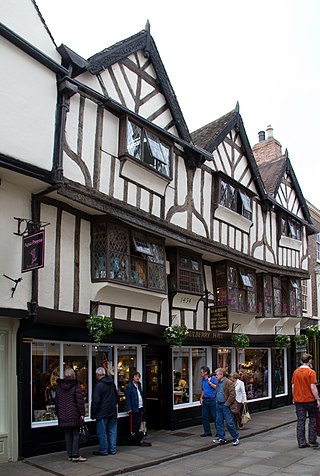
Mulberry Hall is a grade II* listed building on Stonegate, in the city centre of York, in England.

The Archbishop's Palace was the residence of the Archbishop of York during the later Middle Ages. It lay immediately north of York Minster, and its grounds are now known as Dean's Park.
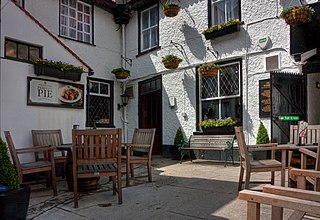
Ye Olde Starre Inne is a pub in the city centre of York, in England. The main block of the pub is a timber-framed structure, constructed in the mid-16th century, and a wing to its left was added in about 1600. By 1644, it was an inn named "The Starre", the buildings lying at the back of a coaching yard, off the north side of Stonegate. This makes it the pub in York which can demonstrate the earliest date for its licence. After the Battle of Marston Moor the inn was used as a hospital for wounded soldiers.
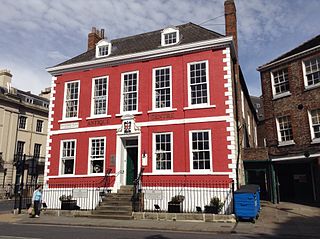
The Red House is a grade II* listed building in the city centre of York, in England.
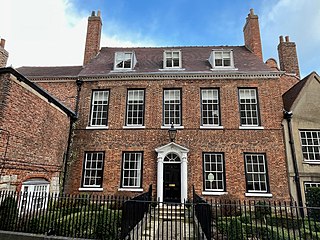
4 Minster Yard is an historic building in the city of York, North Yorkshire, England.
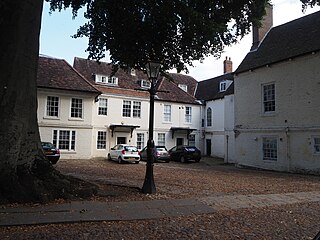
Minster Court is a Grade II* listed group of buildings lying off Minster Yard, in the city centre of York in England.
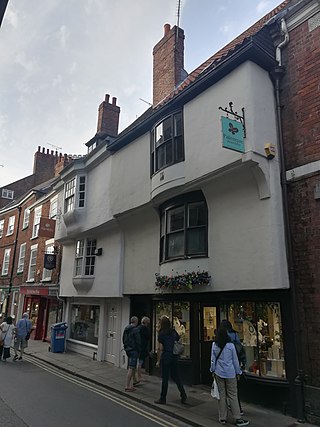
56–60 Low Petergate is a grade II* listed building in the city centre of York, in England.

Fenton House is an historic building in the English city of York, North Yorkshire. It is a Grade II* listed structure, standing at 9 Precentor's Court.
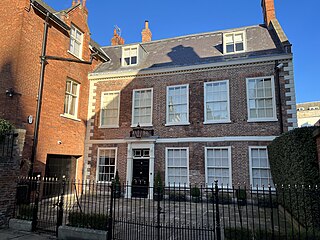
10 Precentor's Court is an historic building in the English city of York, North Yorkshire.
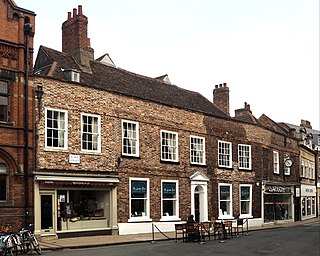
1–5 Blake Street is a Grade II listed terrace of buildings in the city centre of York, in England.

Harkers is a pub in the city centre of York, in England.
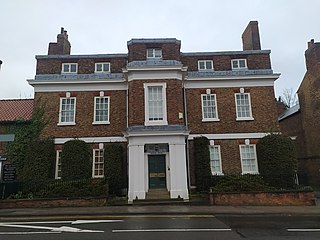
Acomb House is a historic building in the Acomb suburb of York, in England.





















